Outfit Your Shower With the Right Bench for You
http://decor-ideas.org 11/10/2013 14:50 Decor Ideas
A shower bench is a wonderful thing. Should your shower stall be large enough to include a seat, it's sure to add function and comfort to your everyday cleansing experience. There is an art to getting shower seating right, however. I asked bath designer Joy Wilkins of Custom Kitchens by John Wilkins to share some tips of the trade. These suggestions will help steer you toward what works best for your stall and your body.
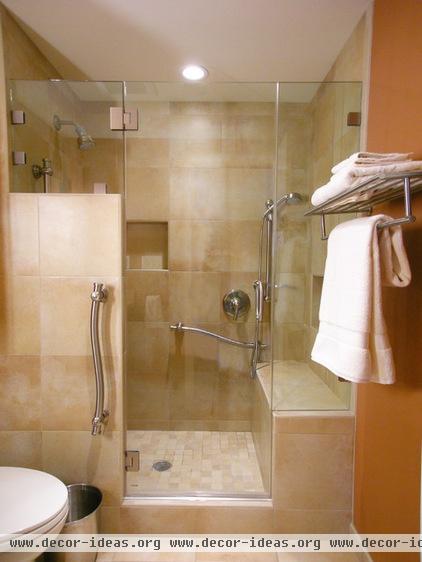
Types of shower benches. There are three kinds of permanent shower benches: built-in, floating and fold-down. You can also use a freestanding bench, but for this ideabook, we're sticking with shower seating that's permanently affixed to the wall.
1. Built-in bench. This is a trade term describing a seat that is framed into the shower wall and floor. This type of seating can run the entire width of a shower enclosure, like the one shown here, or may be limited to a corner. It can have squared angles or be semicircular.
Tip of the trade: “One of the easiest ways to incorporate a built-in bench is with a product like the Laticrete Hydro Ban preformed seat,” Wilkins says. “The seat or bench is installed, then waterproofed and tiled in for a custom look.”
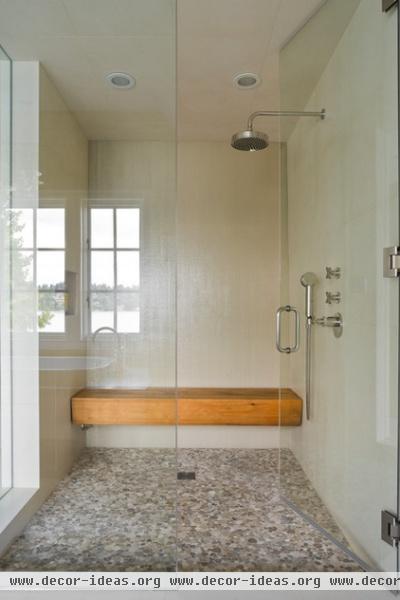
2. Floating bench. A floating bench is firmly secured to the shower walls but is open underneath. It can be made of waterproofed wood, like this one designed by Laura Bohn Design Associates.
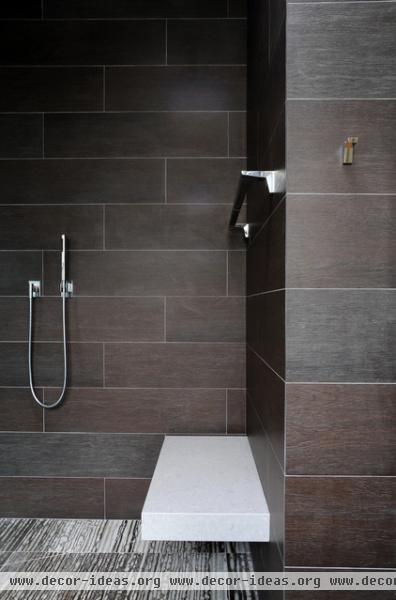
Or it can be made from a single slab of stone, like this one installed by Devlin/McNally Construction.
Though floating benches may look simple in form, careful engineering is required. This task is best left to seasoned professionals.
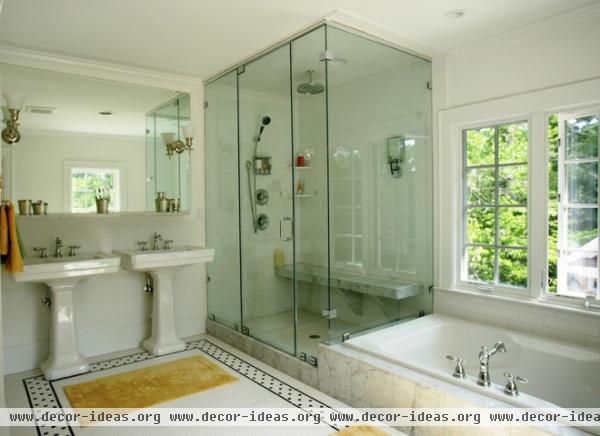
Braces were installed under this near-floating stone bench by Plantation Building, ensuring that the bench can support both its own hefty weight and that of those who sit on it.
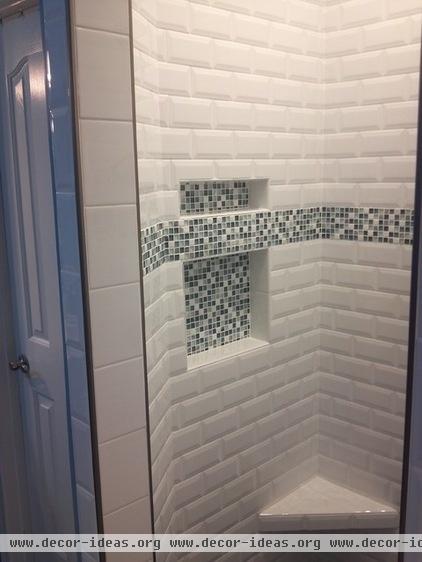
Another option for a floating bench is to tile it to match the rest of the shower.
Tip of the trade: For this sort of tiled corner seat, Wilkins suggests using a product called Better-Bench. “It’s designed in several shapes and comes with the appropriate fasteners for the chosen shape,” she says.
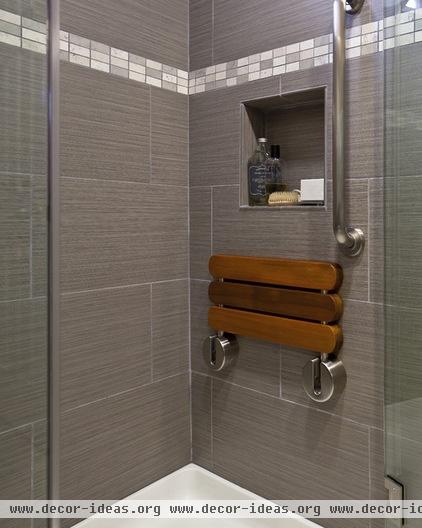
3. Fold-down bench. This is a space-saving solution for smaller showers or universal design showers. Wilkins' company installed this fold-down bench by framing in special blocking between the stud walls.
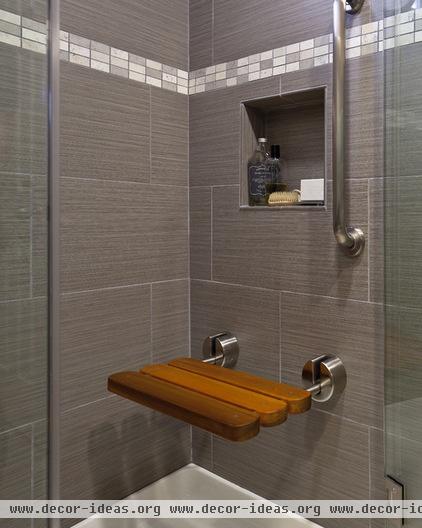
Here's the same bench in a lowered position. When choosing seating, select the style that can best accommodate the weight it will need to support. This one, for example, is designed to hold no more than 250 pounds.
Tip of the trade: “This teak fold-down bench is a Mr. Steam product rated for steam showers," notes Wilkins, "but we also use it in regular showers, as it is designed to withstand water penetration and moisture."
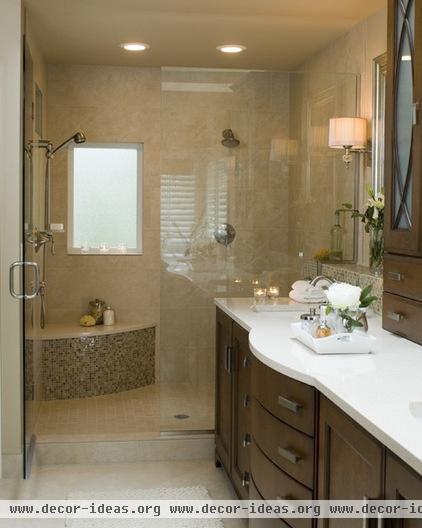
Heavier individuals might want to go with a built-in bench. This is where a conversation with your contractor, designer or architect becomes especially important.
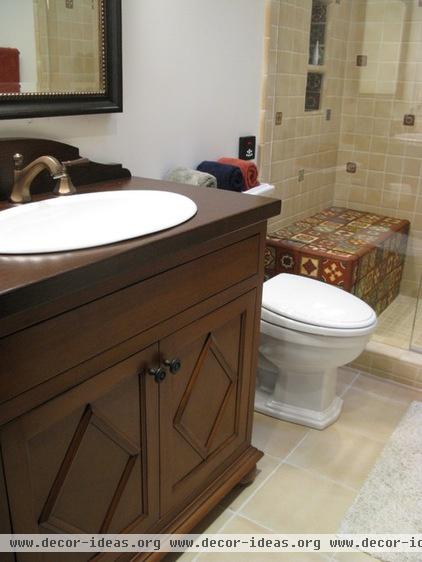
Regardless of the type of bench you choose, Wilkins says, “the top needs to slope slightly, so water runs off instead of pooling.” Pooled water not only feels icky on a naked body, it promotes mildew.
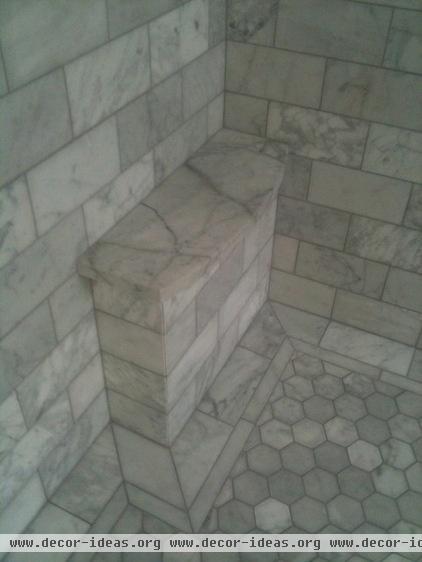
A word about size. The size of your shower — not to mention the number of people who intend to use it at one time — will help determine the most appropriate bench size for your needs. Keep your desired function in mind, too. A narrow bench, like this one, makes shaving legs a dream, but it might not be the most comfortable spot for kicking back and relaxing.

Setting the right height and depth. The height and placement of any bench must be determined prior to installing the backer board and tile, so that the bench's armature can be securely fastened to the blocking.
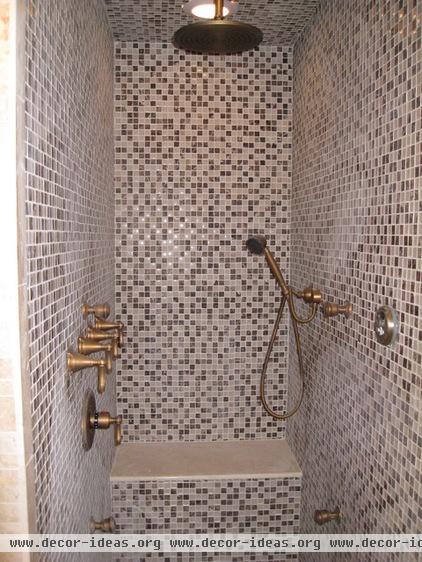
Tip of the trade: The height of any bench, says Wilkins, “is generally determined by each individual customer. Some like a higher perch — around 21½ inches from the shower pan — which is easy to push oneself off of, especially for a taller person. Some people like something similar in height to a chair, around 17½ to 18 inches. This may work best for those who are shorter and prefer to sit on the bench rather than perch.”
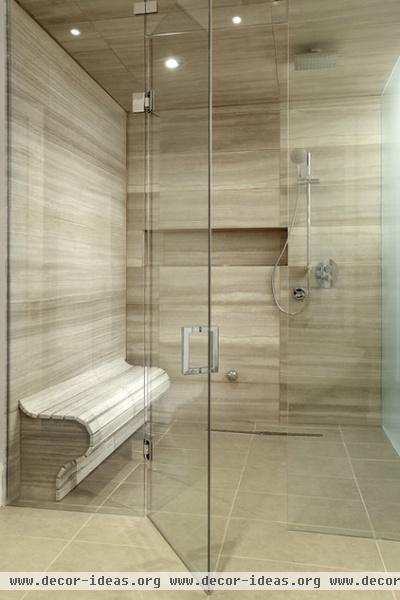
The depth of a bench is also negotiable, depending on what suits the bodies for which the bench is being built, and what the stall will allow. Wilkins says a comfortable depth ranges from 12 to 21 inches.

This shower bench in a Hollywood Hills, California, home falls into the built-in category — but in its own unique way. “It’s a 2,000-pound lava rock that required extra steel engineering to keep it from falling through the floor,” says designer Lori Dennis, who describes this approach as "The Flintstones meets The Jetsons."
The rock was carved onsite, and it took seven men to it haul into place. “It’s carved and smoothed to comfortably fit two rear ends,” the designer notes.
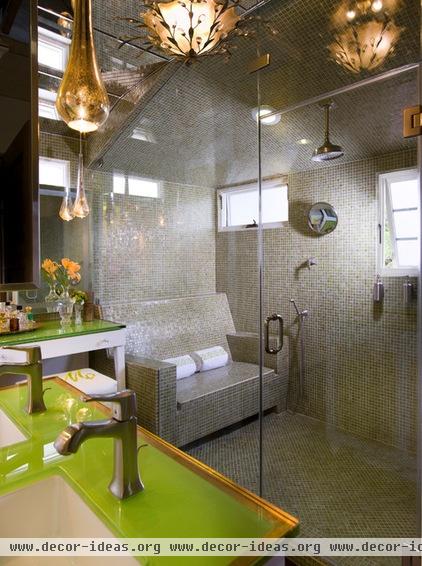
This built-in bench by SoCal Contractor was created for a fashion industry executive who travels most of the year. The custom love seat re-creates the spa experience the owner loves at the boutique hotels she frequents. The tiled, ergonomic design features a sloping seat and a recessed channel that drains behind the “cushions” so water can’t puddle.
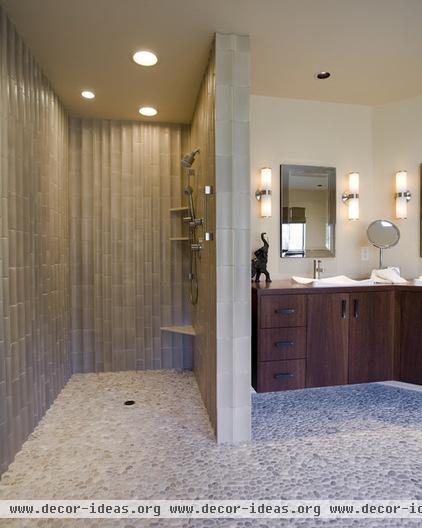
A bench alternative. Not all showers are as large and as lavish as some we've seen here. Nor might they be large enough to accommodate a bench sized for an actual tush. If that's your scenario, don’t despair. Wilkins suggests adding what she calls a toe grip. This is a small recess in the shower wall or a triangle of tile in the corner that takes up very little space, but still helps with shaving legs and washing toes.

Your turn: Please show us your favorite shower bench.
Related Articles Recommended












